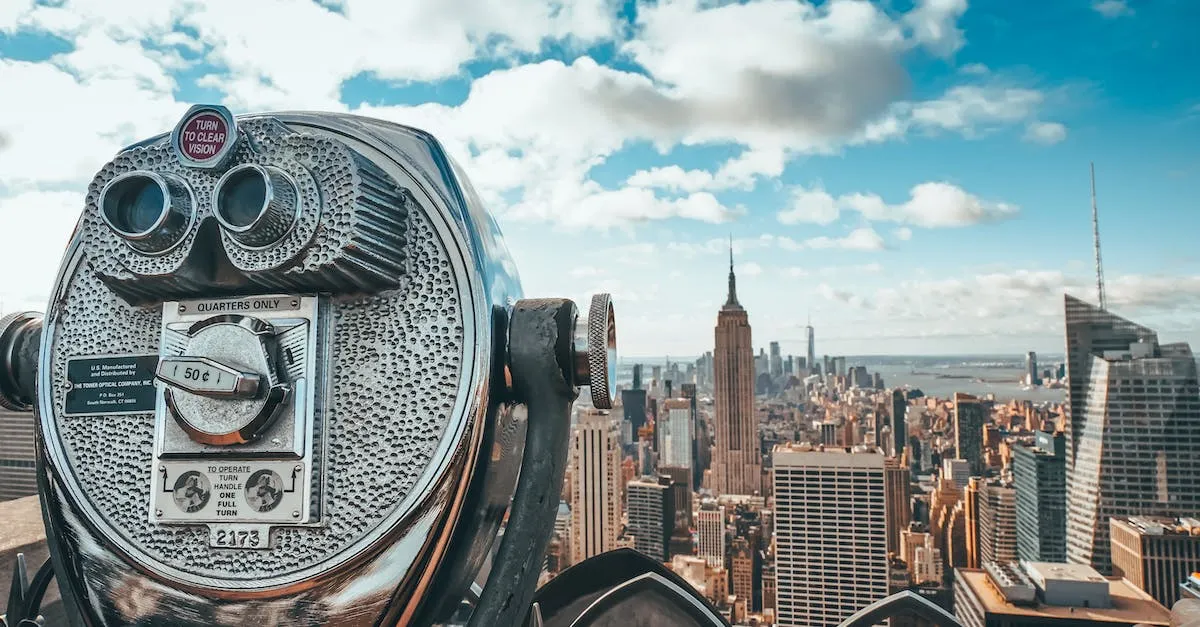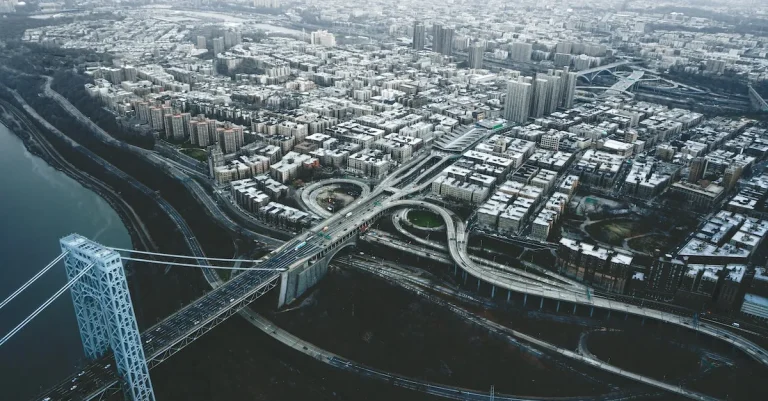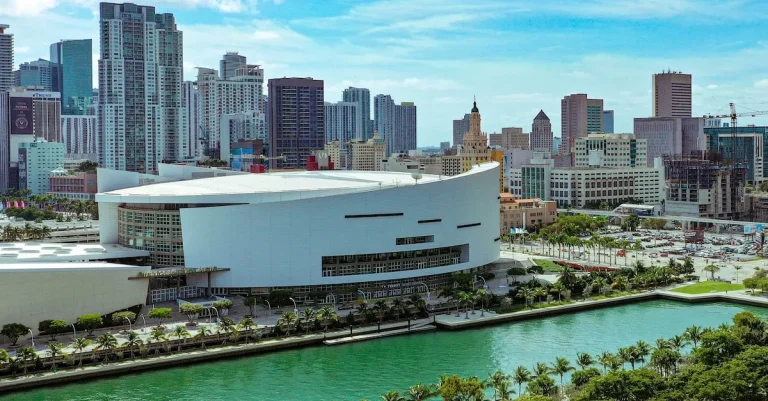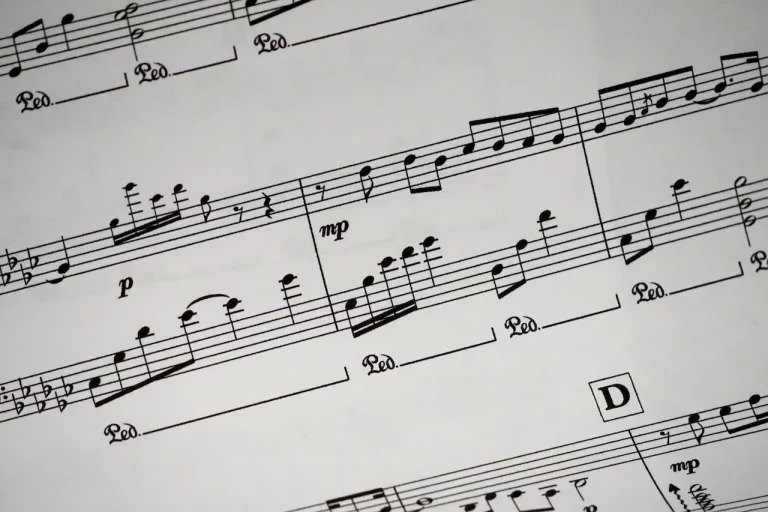What Does New York Look Like?
With its towering skyscrapers, bustling streets, and sprawling parks, New York City boasts one of the most iconic cityscapes in the world. If you’re short on time, here’s a quick answer: New York looks like a dense vertical metropolis blending historic and modern architecture along with green public spaces.
In this comprehensive guide, we’ll paint a detailed picture of New York’s distinct visual landscape. We’ll survey the city’s neighborhoods, landmarks, streets, parks, and infrastructure to convey what it’s like to visit or live in the Big Apple.
Famous Neighborhoods and Landmarks
Manhattan’s Glitzy Skyline
When people think of New York City, Manhattan is often the first borough that comes to mind. Its iconic skyline, filled with towering skyscrapers, is a sight to behold. From the Empire State Building to One World Trade Center, Manhattan is home to some of the most famous landmarks in the world.
Walking down the bustling streets of Times Square or strolling through Central Park, visitors can truly feel the energy and excitement that radiates from this glitzy borough.
Brooklyn’s Residential Charm
Brooklyn, with its tree-lined streets and brownstone townhouses, offers a stark contrast to the hustle and bustle of Manhattan. This borough is known for its vibrant neighborhoods, such as Williamsburg and DUMBO, which are filled with trendy shops, art galleries, and lively street markets.
The iconic Brooklyn Bridge connects Manhattan to Brooklyn, offering stunning views of the city skyline. From Prospect Park to the Brooklyn Botanic Garden, there is no shortage of green spaces and natural beauty in this borough.
Queens’ Diversity
Queens is often referred to as the most diverse borough in New York City. With its rich cultural heritage, visitors can experience a taste of the world without ever leaving the borough. From the vibrant food scene in Flushing to the vibrant street art in Long Island City, Queens is a melting pot of cultures and traditions.
The borough is also home to iconic landmarks such as Citi Field, where the New York Mets play, and the Unisphere in Flushing Meadows-Corona Park, a symbol of the 1964 World’s Fair.
The Bronx’s Urban Grit
The Bronx, known as the birthplace of hip-hop, has a unique charm that sets it apart from the other boroughs. From the famous Yankee Stadium to the Bronx Zoo, there are plenty of attractions to keep visitors entertained.
This borough is also home to the iconic Grand Concourse, a wide boulevard lined with art deco buildings. Despite its urban grit, the Bronx also offers pockets of greenery, such as the beautiful New York Botanical Garden and the peaceful Van Cortlandt Park.
Staten Island’s Suburban Appeal
Staten Island, the least populated of all the boroughs, offers a suburban escape from the hustle and bustle of the city. This borough is known for its natural beauty, with parks and beaches that provide a peaceful retreat.
The Staten Island Ferry offers stunning views of the Statue of Liberty and the Manhattan skyline. Visitors can also explore Historic Richmond Town, a village that showcases Staten Island’s colonial past.
With its slower pace of life and charming neighborhoods, Staten Island offers a different perspective on New York City.
Architectural Styles
New York City is known for its diverse and iconic architectural styles that define its skyline. From towering skyscrapers to historical landmarks, the city is a melting pot of architectural influences. Here are some of the prominent architectural styles you can find in New York:
Art Deco Masterpieces
The Art Deco architectural style flourished in the 1920s and 1930s, and New York City boasts some of the finest examples of this glamorous and elegant style. One of the most famous Art Deco buildings in the city is the iconic Chrysler Building, with its distinctive spire and intricate ornamentation.
Another notable Art Deco masterpiece is the Empire State Building, which was the tallest building in the world when it was completed in 1931.
Neoclassical Civic Structures
The neoclassical architectural style is characterized by its grandeur and references to ancient Greek and Roman architecture. In New York City, you can find numerous neoclassical civic structures that serve as symbols of power and authority.
The New York Public Library, with its iconic lion statues guarding the entrance, is a prime example of this architectural style. The United States Custom House, now known as the Alexander Hamilton U.S. Custom House, is another neoclassical gem that showcases the city’s architectural heritage.
Gothic Towers and Bridges
The Gothic architectural style, with its pointed arches, ribbed vaults, and intricate ornamentation, is often associated with medieval cathedrals and castles. However, New York City has its fair share of Gothic-inspired structures.
The Woolworth Building, completed in 1913, is a prime example of Gothic architecture in the city. Its soaring height and intricate detailing make it a true architectural marvel. Additionally, the Brooklyn Bridge, with its Gothic-style arches and towers, is an iconic symbol of New York City.
Postmodern Skinny Skyscrapers
In recent years, New York City has seen a rise in the construction of slender, glass-clad skyscrapers that are pushing the boundaries of design and engineering. These postmodern skinny skyscrapers, such as 432 Park Avenue and One57, are redefining the city’s skyline.
With their sleek and minimalist designs, these buildings stand out among the traditional skyscrapers of the city.
Industrial Relics and Factories
New York City’s architectural landscape is not only defined by its skyscrapers and grand structures but also by its industrial relics and factories. These buildings, often repurposed for residential or commercial use, add a unique charm to the city.
The Chelsea Market, once a historic factory building, is now a bustling food hall and shopping destination. The High Line, an elevated park built on a former freight rail line, is another example of repurposed industrial infrastructure that has become a beloved public space.
Exploring the architectural styles of New York City is like taking a journey through time and culture. From the grandeur of Art Deco to the elegance of neoclassical, the city’s buildings tell a story of its rich history and vibrant present.
Streets and Transportation
Iconic Streets: Broadway, 5th Ave, 42nd St
New York is famous for its iconic streets that have become symbols of the city’s energy and vibrancy. One of the most well-known streets is Broadway, which stretches from the southern tip of Manhattan all the way up to the Bronx.
Broadway is not only famous for its bright lights and iconic theaters, but also for its bustling atmosphere and diverse mix of people. 5th Avenue is another renowned street, known for its luxury shopping and high-end boutiques.
Home to famous landmarks such as the Empire State Building and Rockefeller Center, 5th Avenue is a must-visit for any tourist. Lastly, 42nd Street, also known as “The Crossroads of the World,” is a vibrant and busy street that is home to Times Square, where millions gather to celebrate New Year’s Eve each year.
Bustling Subway Stations
New York City’s subway system is one of the largest and busiest in the world, with millions of people relying on it for their daily commute. The subway stations themselves are a sight to behold, with their iconic tiled walls, distinctive signage, and unique architectural features.
From the grandeur of Grand Central Terminal to the bustling platforms of Times Square, each subway station has its own character and charm. Navigating the subway can be overwhelming for newcomers, but with a little practice, it becomes second nature and an integral part of the New York experience.
Rivers of Yellow Cabs
When you think of New York City, one image that immediately comes to mind is the sight of yellow cabs speeding through the streets. These iconic taxis have become synonymous with the city and are an essential part of its transportation system.
With their bright yellow color and distinctive “Taxi” sign on the roof, they are easily recognizable and can be hailed from almost anywhere in the city. Riding in a yellow cab is not just a means of getting from point A to point B; it’s an experience that immerses you in the hustle and bustle of the city.
Walkable Neighborhood Sidewalks
Despite its reputation as a bustling metropolis, New York City also has many walkable neighborhoods with charming sidewalks that invite exploration. From the tree-lined streets of the West Village to the lively sidewalks of Chinatown, each neighborhood has its own unique character and charm.
Walking through these neighborhoods allows you to discover hidden gems, local shops, and vibrant street art. Whether you’re strolling through Central Park or exploring the trendy streets of SoHo, New York’s walkable neighborhoods offer a chance to experience the city at a leisurely pace.
Parks and Recreation
New York City is not just a concrete jungle; it is also home to numerous parks and recreational spaces that offer a much-needed respite from the hustle and bustle of city life. These green oases provide a place for New Yorkers and visitors alike to relax, unwind, and reconnect with nature.
Green Oases like Central and Prospect Parks
Central Park and Prospect Park are two iconic green spaces in New York City that offer a wide range of recreational activities. Central Park, located in the heart of Manhattan, spans over 843 acres and is often referred to as the “lungs of the city.”
It features meandering paths, picturesque lakes, and expansive lawns, making it a popular spot for jogging, picnicking, and simply enjoying the outdoors. Prospect Park, situated in Brooklyn, covers 585 acres and boasts a beautiful lake, a zoo, and various sports facilities.
It is a favorite destination for families, nature enthusiasts, and sports enthusiasts alike.
Urban Plazas and Pedestrian Zones
In addition to large parks, New York City also offers numerous urban plazas and pedestrian zones that provide a space for relaxation and socialization. Times Square, known for its bright lights and bustling atmosphere, has undergone significant pedestrianization efforts in recent years.
The transformation has created a vibrant public space where people can gather, take in the sights, and enjoy the street performances. Other notable urban plazas in the city include Bryant Park, Union Square, and Washington Square Park, each with its own unique character and charm.
Coastal Promenades and Piers
New York City is surrounded by water, and its coastal promenades and piers offer stunning views of the city skyline and waterfront. The High Line, a converted elevated railway on Manhattan’s West Side, has become a popular destination for both locals and tourists.
This unique park features beautifully landscaped gardens, art installations, and breathtaking views of the Hudson River. The Brooklyn Bridge Park, located along the East River, provides a scenic waterfront experience with its recreational piers, sports fields, and picnic areas.
Gardens and Landscaped Campus Quads
New York City is also home to a variety of gardens and landscaped campus quads that offer a peaceful retreat amidst the urban landscape. The New York Botanical Garden in the Bronx is a sprawling oasis that showcases diverse plant collections, including a stunning rose garden and a picturesque conservatory.
The campus of Columbia University features a beautifully manicured quad, perfect for studying or simply enjoying a moment of tranquility. These green spaces within the city provide a much-needed connection to nature and contribute to the overall well-being of New Yorkers.
For more information about parks and recreation in New York City, you can visit https://www.nycgovparks.org.
People and Culture
New York City, often referred to as the “melting pot” of America, is famous for its diverse and cosmopolitan population. With over 8 million residents from all over the world, the city is a vibrant tapestry of cultures, languages, and traditions.
Walking through the streets of New York, you will encounter people from every corner of the globe, creating a unique and rich cultural experience.
Diverse, Cosmopolitan Population
From Chinatown to Little Italy, Harlem to the Lower East Side, each neighborhood in New York City has its own distinct flavor and cultural identity. This diversity is evident in the variety of cuisines, languages spoken, and traditions celebrated throughout the city.
The vibrant mix of cultures in New York creates a sense of inclusivity and openness that is truly remarkable.
Street Artists and Performers
One of the things that make New York City so special is the abundance of street artists and performers who bring life and creativity to the streets. Whether it’s a talented musician playing their guitar in Central Park or a group of breakdancers showcasing their skills in Times Square, you can always find entertainment around every corner.
These artists contribute to the vibrant and artistic atmosphere of the city, adding to its unique charm.
Sidewalk Vendors and Storefronts
New York City is known for its bustling sidewalks filled with vendors selling everything from hot dogs and pretzels to handmade crafts and vintage clothing. These sidewalk vendors and the storefronts that line the busy streets are an integral part of the city’s culture and economy.
Exploring the various markets and shops allows you to immerse yourself in the vibrant energy of the city and discover unique treasures along the way.
Outdoor Dining and Drinking
When it comes to experiencing the local culture in New York City, outdoor dining and drinking is a must. From rooftop bars with breathtaking views of the skyline to charming sidewalk cafes nestled in quaint neighborhoods, there are endless options to enjoy a meal or a drink al fresco.
This vibrant outdoor dining scene is not only a great way to savor delicious food and drinks but also to soak in the bustling atmosphere of the city.
Conclusion
With its dense clusters of skyscrapers, brownstone row houses, towering bridges, and leafy parks, New York offers an intense urban landscape that has inspired movies, art, literature, and popular imagination. The city’s neighborhoods each flaunt distinct personalities while the whole comes together as an iconic metropolis whose visuals match its outsized global clout.








